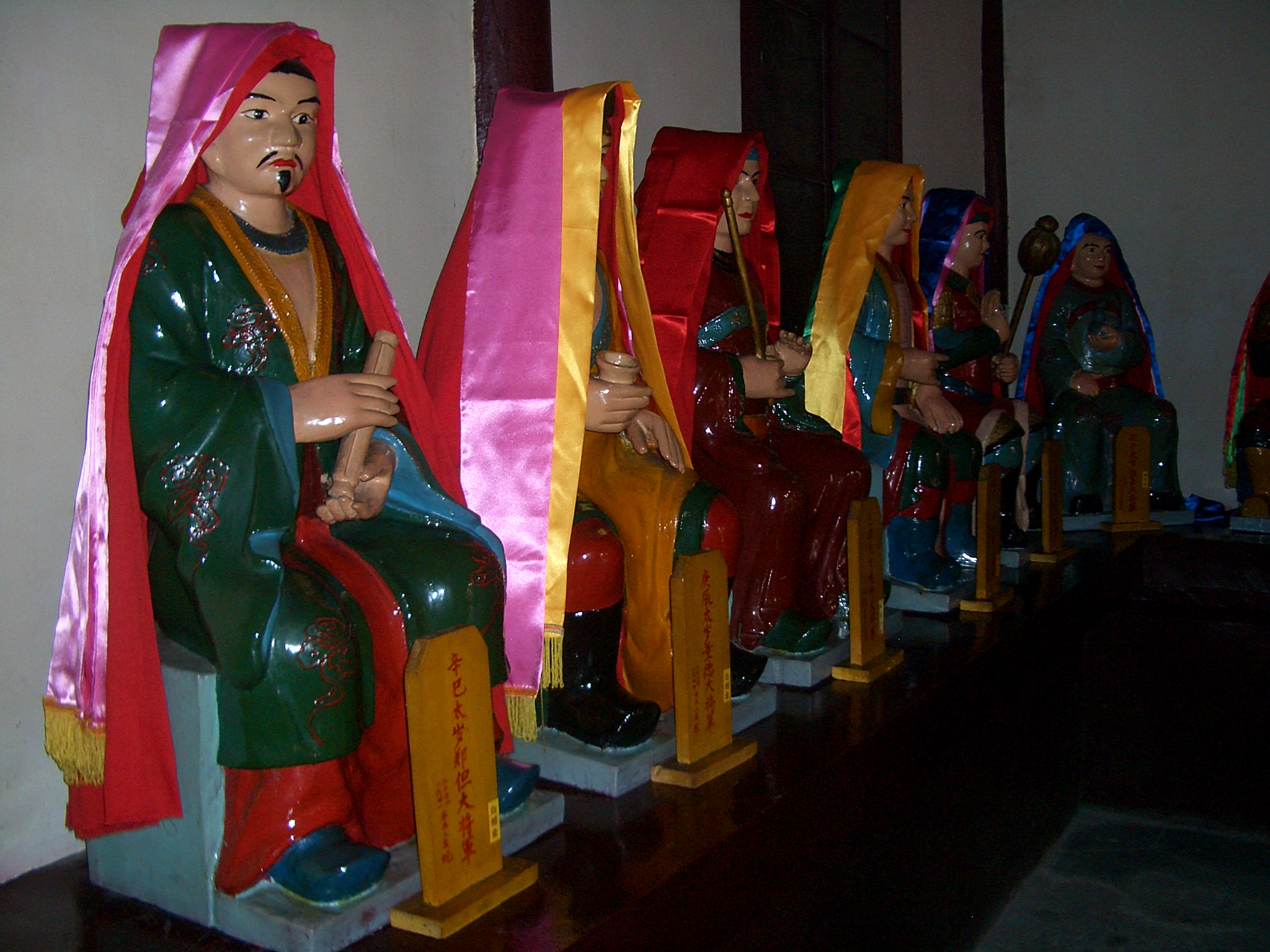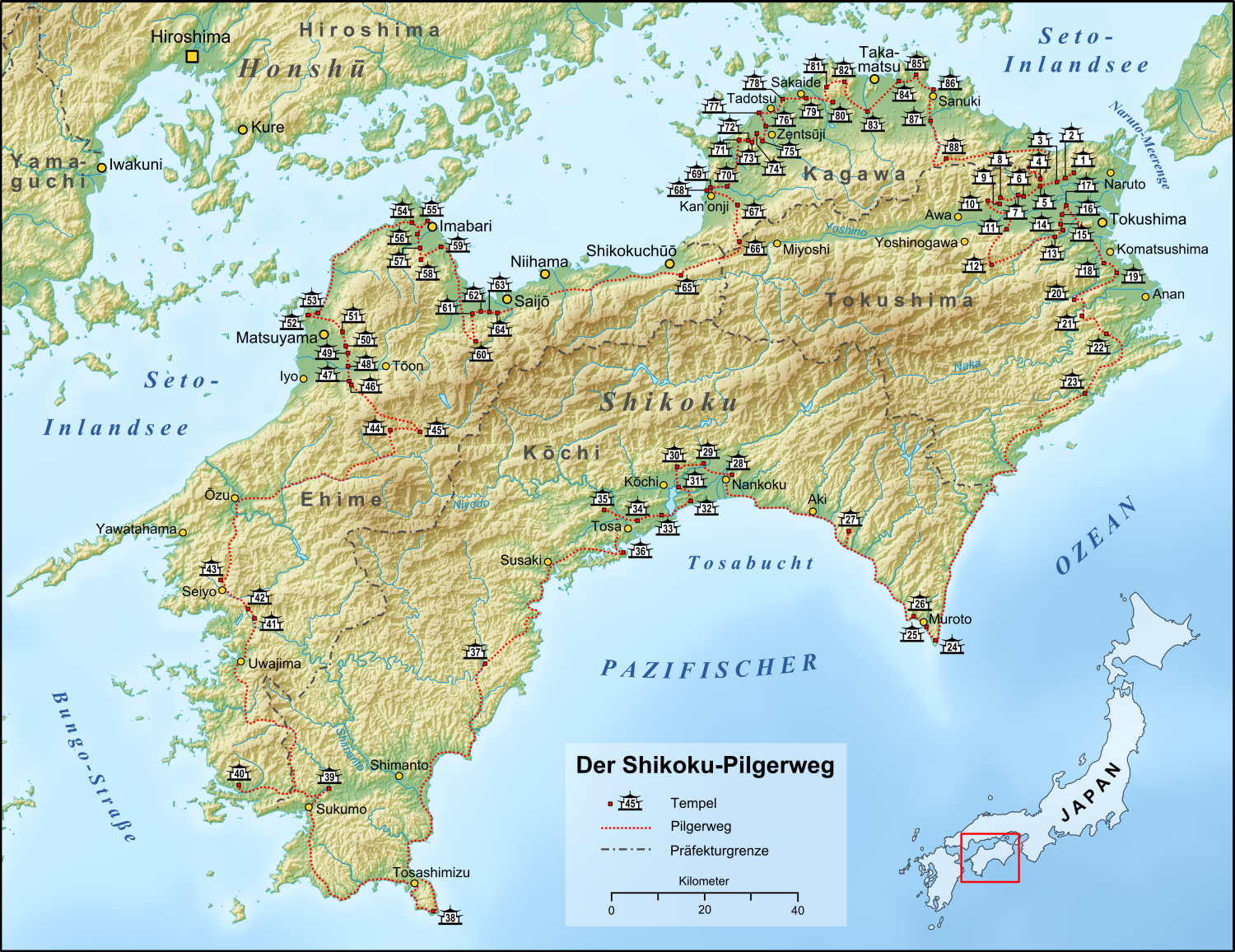|
Santōka Taneda
was the pen-name of , a Japanese author and haiku poet. He is known for his free verse haiku—a style which does not conform to the formal rules of traditional haiku. Early life Santōka was born in a village located in Yamaguchi Prefecture, Yamaguchi prefecture, to a wealthy land-owning family. When he was eleven his mother committed suicide by throwing herself into the family well. Though the exact reason for her action is unknown, according to Santōka's diaries his mother had finally reached the point where she could no longer live with her husband's philandering. Following the incident, Santōka was raised by his grandmother. In 1902, he entered Waseda University in Tokyo as a student of literature. While there, he began drinking heavily, and in 1904, at the beginning of the Russo-Japanese War, he dropped out of school. The documented reason was "nervous breakdown", which some believe to be a euphemism for frequent and severe drunkenness. By that time his father Takejir� ... [...More Info...] [...Related Items...] OR: [Wikipedia] [Google] [Baidu] |
Yamaguchi Prefecture
is a Prefectures of Japan, prefecture of Japan located in the Chūgoku region of Honshu. Yamaguchi Prefecture has a population of 1,377,631 (1 February 2018) and has a geographic area of 6,112 Square kilometre, km2 (2,359 Square mile, sq mi). Yamaguchi Prefecture borders Shimane Prefecture to the north and Hiroshima Prefecture to the northeast. Yamaguchi (city), Yamaguchi is the capital and Shimonoseki is the largest city of Yamaguchi Prefecture, with other major cities including Ube, Yamaguchi, Ube, Shūnan, and Iwakuni. Yamaguchi Prefecture is located at the western tip of Honshu with coastlines on the Sea of Japan and Seto Inland Sea, and separated from the island of Kyushu by the Kanmon Straits. History Yamaguchi Prefecture was created by the merger of the provinces of Suō Province, Suō and Nagato Province, Nagato. During the rise of the samurai class during the Heian period, Heian and Kamakura period, Kamakura Periods (794–1333), the Ouchi family of Suō Province ... [...More Info...] [...Related Items...] OR: [Wikipedia] [Google] [Baidu] |
Sexagenary Cycle
The sexagenary cycle, also known as the gānzhī (干支) or stems-and-branches, is a cycle of sixty terms, each corresponding to one year, thus amounting to a total of sixty years every cycle, historically used for recording time in China and the rest of the East Asian cultural sphere, as well as in Southeast Asia. It appears as a means of recording days in the first Chinese written texts, the oracle bones of the late second millennium BC Shang dynasty. Its use to record years began around the middle of the 3rd century BC. The cycle and its variations have been an important part of the traditional calendrical systems in Chinese-influenced Asian states and territories, particularly those of Japan, Korea, and Vietnam, with the old Chinese system still in use in Taiwan, and in Mainland China. In India, the Ahom people (descendants of the Dai people of Yunnan who migrated to Assam in the 13th century) also used the sexagenary cycle known as Lak-Ni. This traditional metho ... [...More Info...] [...Related Items...] OR: [Wikipedia] [Google] [Baidu] |
Pilgrimage
A pilgrimage is a travel, journey to a holy place, which can lead to a personal transformation, after which the pilgrim returns to their daily life. A pilgrim (from the Latin ''peregrinus'') is a traveler (literally one who has come from afar) who is on a journey to a holy place. Typically, this is a physical journey (often on foot) to some place of special significance to the adherent of a particular religious belief system. Background Pilgrimages frequently involve a journey or search of morality, moral or spirituality, spiritual significance. Typically, it is a journey to a shrine or other location of importance to a person's beliefs and faith, although sometimes it can be a metaphorical journey into someone's own beliefs. Many religions attach spiritual importance to particular places: the place of birth or death of founders or saints, or to the place of their "calling" or spiritual awakening, or of their connection (visual or verbal) with the divine, to locations where ... [...More Info...] [...Related Items...] OR: [Wikipedia] [Google] [Baidu] |
Shikoku Pilgrimage
The or is a multi-site pilgrimage of 88 temples associated with the Buddhist monk Kūkai (''Kōbō Daishi'') on the island of Shikoku, Japan. A popular and distinctive feature of the island's cultural landscape, and with a long history, large numbers of pilgrims, known as , still undertake the journey for a variety of ascetic, pious, and tourism-related purposes. The pilgrimage is traditionally completed on foot, but modern pilgrims use cars, taxis, buses, bicycles, or motorcycles, and often augment their travels with public transportation. The standard walking course is approximately long and can take anywhere from 30 to 60 days to complete. In addition to the 88 "official" temples of the pilgrimage, there are 20 ''bekkaku'' (別格) temples, which are officially associated with the Shikoku Pilgrimage (and hundreds more ''bangai'' (番外) temples, simply meaning "outside the numbers," which are not considered part of the official 88). To complete the pilgrimage, it ... [...More Info...] [...Related Items...] OR: [Wikipedia] [Google] [Baidu] |
Sōtō
Sōtō Zen or is the largest of the three traditional sects of Zen in Japanese Buddhism (the others being Rinzai school, Rinzai and Ōbaku). It is the Japanese line of the Chinese Caodong school, Cáodòng school, which was founded during the Tang dynasty by Dongshan Liangjie, Dòngshān Liángjiè. It emphasizes Shikantaza, meditation with no objects, anchors, or content. The meditator strives to be aware of the stream of thoughts, allowing them to arise and pass away without interference. The Japanese brand of the sect was imported in the 13th century by Dōgen Zenji, who studied Caodong, Cáodòng Buddhism () abroad in China. Dōgen is remembered today as the ancestor of Sōtō Zen in Japan along with Keizan, Keizan Jōkin. With about 14,000 temples, Sōtō is one of the largest Japanese Buddhist organizations. Sōtō Zen is now also popular in the West, and in 1996 priests of the Sōtō Zen tradition formed the Soto Zen Buddhist Association based in North America. Histor ... [...More Info...] [...Related Items...] OR: [Wikipedia] [Google] [Baidu] |
Communist
Communism () is a sociopolitical, philosophical, and economic ideology within the socialist movement, whose goal is the creation of a communist society, a socioeconomic order centered on common ownership of the means of production, distribution, and exchange that allocates products in society based on need.: "One widespread distinction was that socialism socialised production only while communism socialised production and consumption." A communist society entails the absence of private property and social classes, and ultimately money and the state. Communists often seek a voluntary state of self-governance but disagree on the means to this end. This reflects a distinction between a libertarian socialist approach of communization, revolutionary spontaneity, and workers' self-management, and an authoritarian socialist, vanguardist, or party-driven approach to establish a socialist state, which is expected to wither away. Communist parties have been described as radi ... [...More Info...] [...Related Items...] OR: [Wikipedia] [Google] [Baidu] |
1923 Great Kantō Earthquake
The 1923 Great Kantō earthquake (, or ) was a major earthquake that struck the Kantō Plain on the main Japanese island of Honshu at 11:58:32 JST (02:58:32 UTC) on Saturday, 1 September 1923. It had an approximate magnitude of 8.0 on the moment magnitude scale (Mw), with its epicenter located southwest of the capital Tokyo. The earthquake devastated Tokyo, the port city of Yokohama, and surrounding prefectures of Kanagawa, Chiba, and Shizuoka, and caused widespread damage throughout the Kantō region. Fires, exacerbated by strong winds from a nearby typhoon, spread rapidly through the densely populated urban areas, accounting for the majority of the devastation and casualties. The death toll is estimated to have been between 105,000 and 142,000 people, including tens of thousands who went missing and were presumed dead. Over half of Tokyo and nearly all of Yokohama were destroyed, leaving approximately 2.5 million people homeless. The disaster triggered widespread social ... [...More Info...] [...Related Items...] OR: [Wikipedia] [Google] [Baidu] |
Ozaki Hōsai
was the ''haigo'' (haikai pen name) of Ozaki Hideo, a Japanese people, Japanese Japanese poetry, poet of the late Meiji period, Meiji and Taishō period, Taishō periods of Japan. An alcoholic, Ozaki witnessed the birth of the modern free verse ''haiku'' movement. His verses are permeated with loneliness, most likely a result of the isolation, poverty and poor health of his final years. Biography Ozaki was born in what is now part of Tottori, Tottori, Tottori city in Tottori prefecture. Ozaki's interest in ''haiku'' and writing began at an early age, and he was influenced by the pioneer of free verse style ''haiku'', Ogiwara Seisensui, while still in high school. Ozaki attended the prestigious Tokyo Imperial University, graduating on 16 October 1909. During this period he proposed marriage to , a long-time friend and distant maternal relative. Unfortunately for Ozaki, her older brother opposed the marriage, believing that this maternal connection was too close. Nearly immediate ... [...More Info...] [...Related Items...] OR: [Wikipedia] [Google] [Baidu] |
Kyūshū
is the third-largest island of Japan's four main islands and the most southerly of the four largest islands (i.e. excluding Okinawa and the other Ryukyu (''Nansei'') Islands). In the past, it has been known as , and . The historical regional name referred to Kyushu and its surrounding islands. Kyushu has a land area of and a population of 14,311,224 in 2018. In ancient times, there is a theory that Kyushu was home to its own independent dynasty, where a unique, southern-influenced culture and tradition distinct from that of Honshu flourished. In the 8th-century Taihō Code reforms, Dazaifu was established as a special administrative term for the region. Geography The island is mountainous, and Japan's most active volcano, Mount Aso at , is on Kyūshū. There are many other signs of tectonic activity, including numerous areas of hot springs. The most famous of these are in Beppu, on the east shore, and around Mt. Aso in central Kyūshū. The island is separated f ... [...More Info...] [...Related Items...] OR: [Wikipedia] [Google] [Baidu] |
Kumamoto
is the capital Cities of Japan, city of Kumamoto Prefecture on the island of Kyushu, Japan. , the city has an estimated population of 738,907 and a population density of 1,893 people per km2. The total area is 390.32 km2. had a population of 1,461,000, as of the 2000 census. , Kumamoto Urban Employment Area, Metropolitan Employment Area has a GDP of US$39.8 billion. It is not considered part of the Fukuoka–Kitakyushu metropolitan area, despite their shared border. The city was designated on April 1, 2012, by City designated by government ordinance, government ordinance. History Early modern period Shokuhō period Katō Kiyomasa, a contemporary of Toyotomi Hideyoshi, was made ''daimyō'' of half of the (old) administrative region of Higo Province, Higo in 1588. Afterwards, Kiyomasa built Kumamoto Castle. Due to its many innovative defensive designs, Kumamoto Castle was considered impenetrable, and Kiyomasa enjoyed a reputation as one of the finest castle-builders in ... [...More Info...] [...Related Items...] OR: [Wikipedia] [Google] [Baidu] |
Kigo
A is a word or phrase associated with a particular season, used in traditional forms of Japanese poetry. Kigo are used in the collaborative linked-verse forms renga and renku, as well as in haiku, to indicate the season referred to in the stanza. They are valuable in providing economy of expression. History Representation of, and reference to, the seasons has long been important in Culture of Japan, Japanese culture and poetry. The earliest anthology of Japanese poetry, the mid-8th century , contained several sections devoted to the seasons. By the time of the first imperial Japanese anthology, the a century and a half later (AD 905), the seasonal sections had become a much larger part of the anthology. Both of these anthologies had sections for other categories such as love poems and miscellaneous () poems. The writing of the linked-verse form renga dates to the middle of the Heian period (roughly AD 1000) and developed through the medieval era. Over time, set rules develope ... [...More Info...] [...Related Items...] OR: [Wikipedia] [Google] [Baidu] |








